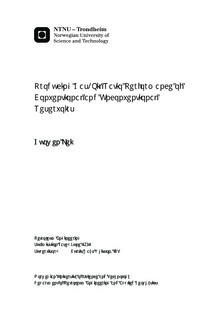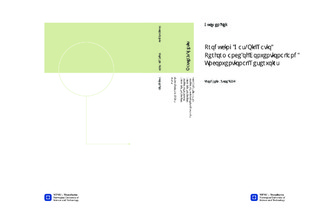| dc.description.abstract | This study presents a detailed analysis of producing gas-oil ratio performance characteristics from conventional reservoir to unconventional reservoir. Numerical simulations of various reservoir fluid systems are included for comparison. In a wide sense of the word, the term of unconventional reservoir is including tight gas sand, coal bed methane, gas hydrate deposits, heavy oil gas shale and etc. In this study we specify the unconventional reservoir to only mean the low and ultra low permeability reservoir, which is including tight or shale reservoir. As an emerging research topic in the E&P industry, shale reservoir s long-term well performance characteristics are generally not well understood (Anderson et al. 2010). Research methods and techniques for conventional reservoir are usually directly used in this unconventional reservoir analysis. These methods, however, have proven to be too pessimistic (Anderson et al., 2010). Fit-for-purpose approaches or solutions should be introduced in this new topic. Recently, hydraulic fracturing treatment is commonly used in the low matrix permeability reservoir to attain an economic production rate. The difference of well production performance between conventional reservoir and unconventional reservoir is not well known. In this study, we are trying to give a quantitative analysis in order to answer this question.In this study, a generic reservoir from field data with constant reserves and size were assumed. This reservoir model is homogeneous and of constant porosity, permeability and initial water saturation. In order to compare the production performance, fluid systems are varied from volatile oil to near critical oil, to gas condensate and to wet gas. The permeability of the reservoir model is also designed from high (conventional reservoir) to ultra low (unconventional), which ranges from 101 to 10-5 mD. Influence from fracture is especially considered because fractures in the low permeability reservoir provide a high conductivity that connects the reservoir matrix to the horizontal well. Fractures in the model are designed with identical geometrical characteristics (length, thickness) and of inner homogeneous properties (porosity, permeability).A black-oil model is used for each reservoir, and its PVT properties are generated with a 31 components EOS model using Whitson-Torp procedure (Whitson et al., 1983). Reservoir fluid systems equilibrium calculation in the black-oil model is done using the initial gas-oil ratio. We have compared the well s production performance for each fluid system.Based on the industry experience, two standards are used in reservoir simulation control: gas production rate and cumulative revenue. The gas production rate with 10 ×106 ft3/day in the first 10 days or the cumulative revenue equal to 5 ×105 USD from the first 10 days is set as the standard for the commercial well rate. All of these simulations are run under the control of these two types which have just been mentioned. A case of liquid rich gas reservoir is analyzed systematically, to compare its production performance when reservoir permeability is changed from high to low. We are interested in how much oil or gas condensate can be extracted from the reservoir if same initial fluids in the reservoir but of a different permeability. This study is useful and practical, particularly for the industry in the era of high oil price and low gas price in North America.The simulation results show that we can extract more liquid from the reservoir if the matrix permeability is higher, particularly for the reservoir with initially large oil contents (volatile oil reservoir, near critical reservoir and gas condensate reservoir). Fracturing treatment in unconventional reservoir is required to attain an economic production rate. We also realize that for the required number of fractures and reservoir s matrix permeability, there exists linear correlation in log-log plot in the low-permeability reservoir. In this study, the unique optimization software Pipe-It and reservoir simulator SENSOR are used. Optimal simulation results of permeability combination are obtained by the module Optimizer in Pipe-It. | nb_NO |

